

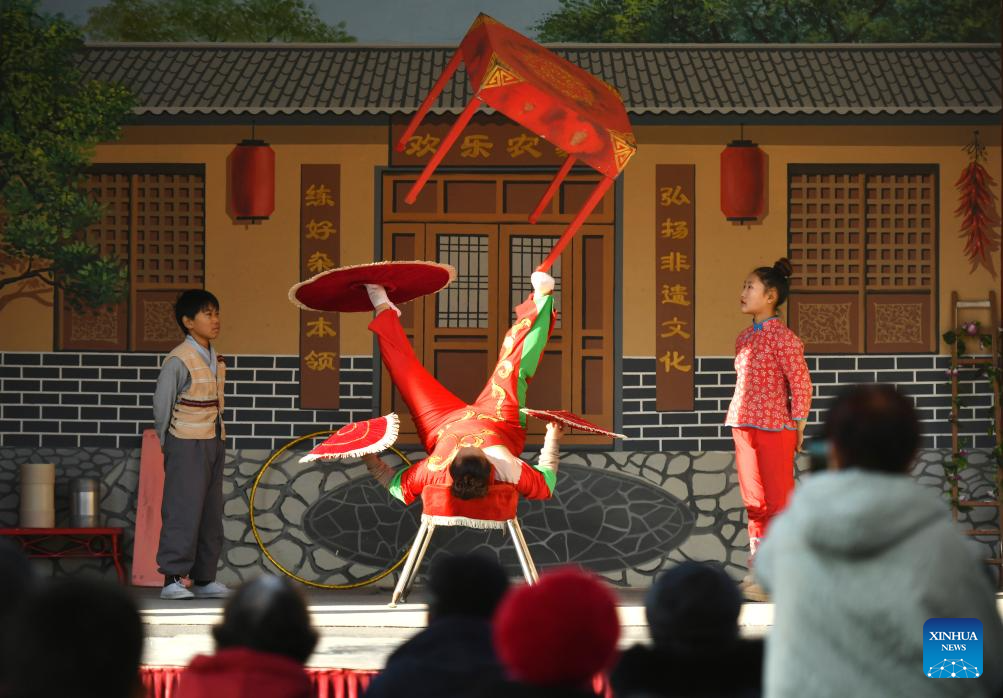
An acrobat performs at a culture and entertainment facility in Wuqiao County, north China's Hebei Province, Dec. 17, 2024.
The origin of Wuqiao acrobatics can be traced back to the Han Dynasty (202 B.C.-220 A.D.). It was inscribed as one of the first batch of intangible cultural heritages at the state level in 2006. Dubbed the "cradle of Chinese acrobatics," Wuqiao has in recent years scaled up its efforts to sustain and popularize this time-honored treasure. (Xinhua/Mu Yu)
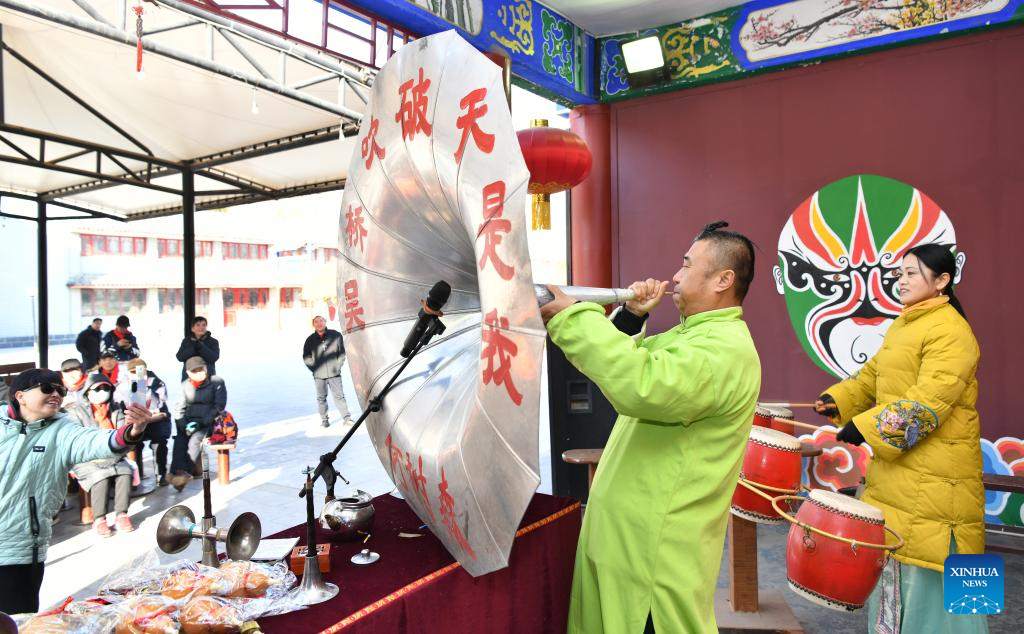
An acrobat performs with a special trumpet at a culture and entertainment facility in Wuqiao County, north China's Hebei Province, Dec. 17, 2024.
The origin of Wuqiao acrobatics can be traced back to the Han Dynasty (202 B.C.-220 A.D.). It was inscribed as one of the first batch of intangible cultural heritages at the state level in 2006. Dubbed the "cradle of Chinese acrobatics," Wuqiao has in recent years scaled up its efforts to sustain and popularize this time-honored treasure. (Xinhua/Mu Yu)
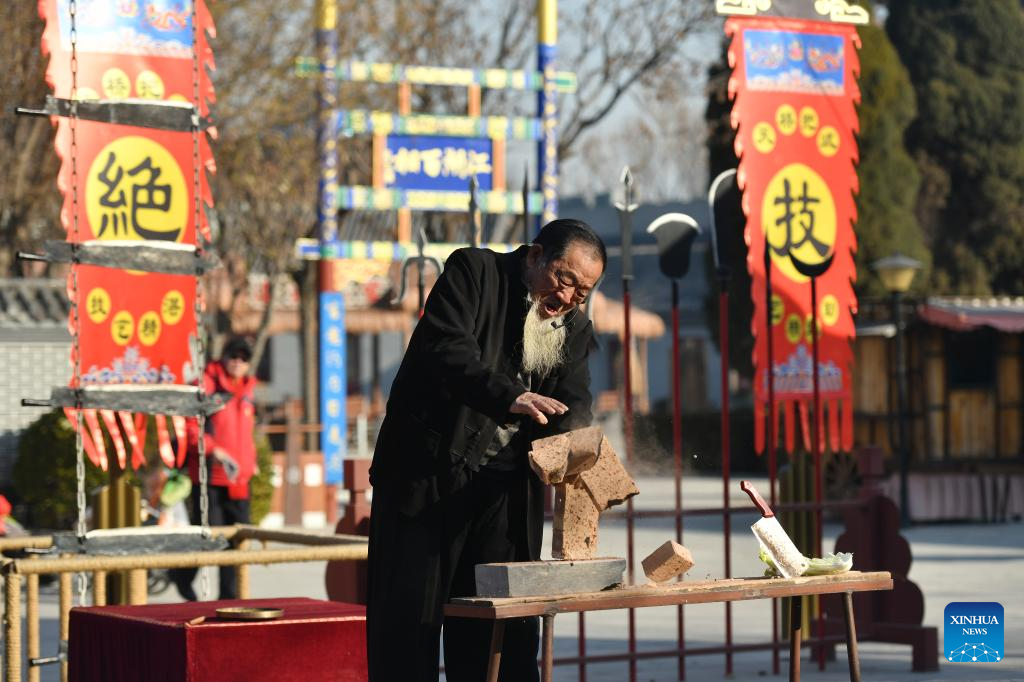
An acrobat performs a stunt of Hard Qigong, a traditional Chinese martial art, at a culture and entertainment facility in Wuqiao County, north China's Hebei Province, Dec. 17, 2024.
The origin of Wuqiao acrobatics can be traced back to the Han Dynasty (202 B.C.-220 A.D.). It was inscribed as one of the first batch of intangible cultural heritages at the state level in 2006. Dubbed the "cradle of Chinese acrobatics," Wuqiao has in recent years scaled up its efforts to sustain and popularize this time-honored treasure. (Xinhua/Mu Yu)
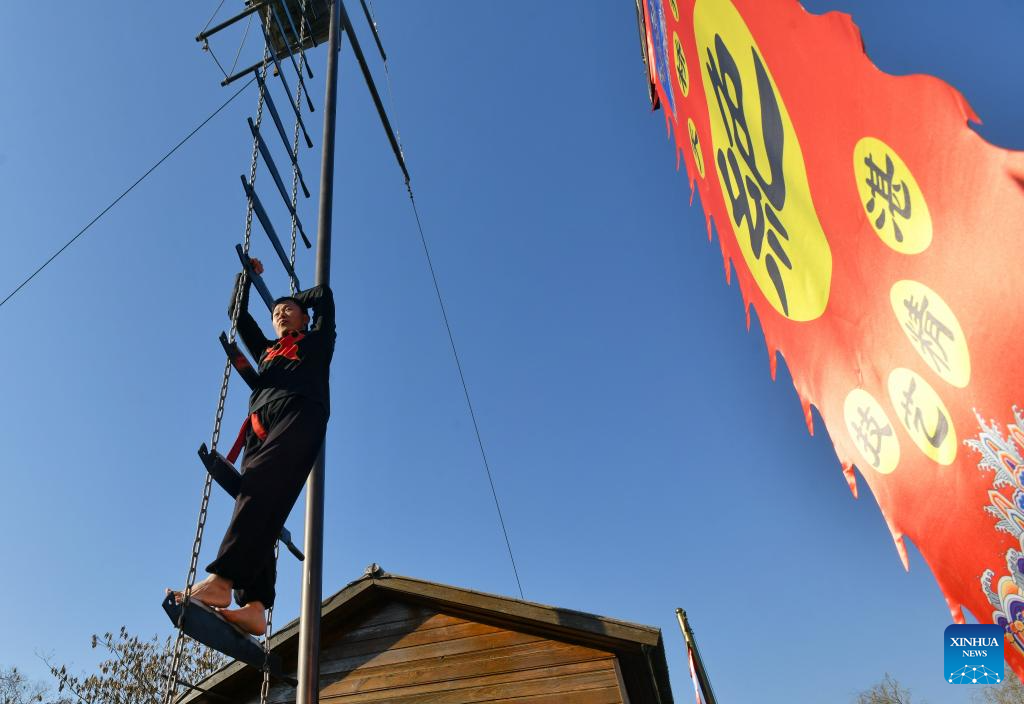
An acrobat climbs a ladder of blades at a culture and entertainment facility in Wuqiao County, north China's Hebei Province, Dec. 17, 2024.
The origin of Wuqiao acrobatics can be traced back to the Han Dynasty (202 B.C.-220 A.D.). It was inscribed as one of the first batch of intangible cultural heritages at the state level in 2006. Dubbed the "cradle of Chinese acrobatics," Wuqiao has in recent years scaled up its efforts to sustain and popularize this time-honored treasure. (Xinhua/Mu Yu)
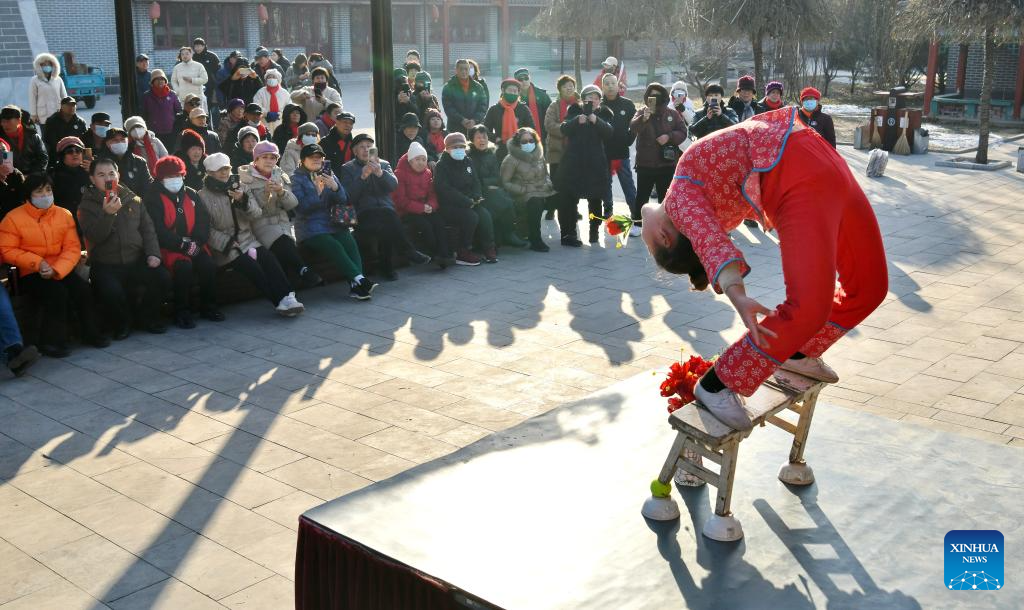
An acrobat performs a contortion stunt at a culture and entertainment facility in Wuqiao County, north China's Hebei Province, Dec. 17, 2024.
The origin of Wuqiao acrobatics can be traced back to the Han Dynasty (202 B.C.-220 A.D.). It was inscribed as one of the first batch of intangible cultural heritages at the state level in 2006. Dubbed the "cradle of Chinese acrobatics," Wuqiao has in recent years scaled up its efforts to sustain and popularize this time-honored treasure. (Xinhua/Mu Yu)

A student practices juggling with hats at the Hebei Wuqiao Acrobatic Art School in Wuqiao County, north China's Hebei Province, Dec. 17, 2024.
The origin of Wuqiao acrobatics can be traced back to the Han Dynasty (202 B.C.-220 A.D.). It was inscribed as one of the first batch of intangible cultural heritages at the state level in 2006. Dubbed the "cradle of Chinese acrobatics," Wuqiao has in recent years scaled up its efforts to sustain and popularize this time-honored treasure. (Xinhua/Mu Yu)
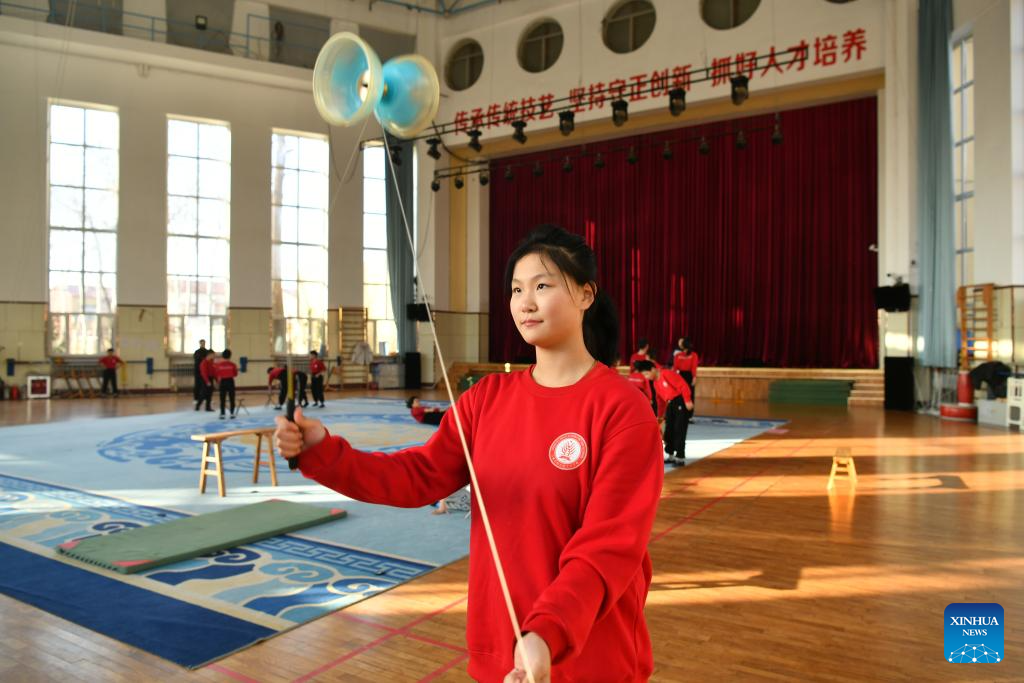
A student practices Diabolo at the Hebei Wuqiao Acrobatic Art School in Wuqiao County, north China's Hebei Province, Dec. 17, 2024.
The origin of Wuqiao acrobatics can be traced back to the Han Dynasty (202 B.C.-220 A.D.). It was inscribed as one of the first batch of intangible cultural heritages at the state level in 2006. Dubbed the "cradle of Chinese acrobatics," Wuqiao has in recent years scaled up its efforts to sustain and popularize this time-honored treasure. (Xinhua/Mu Yu)
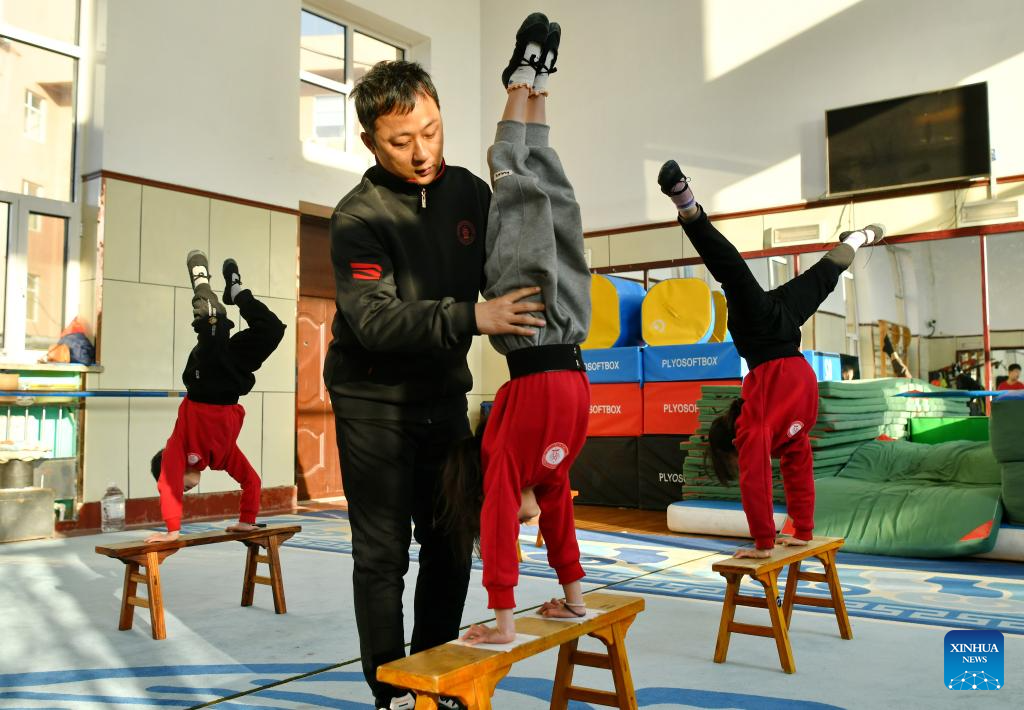
Students practice under an instructor's supervision at the Hebei Wuqiao Acrobatic Art School in Wuqiao County, north China's Hebei Province, Dec. 17, 2024.
The origin of Wuqiao acrobatics can be traced back to the Han Dynasty (202 B.C.-220 A.D.). It was inscribed as one of the first batch of intangible cultural heritages at the state level in 2006. Dubbed the "cradle of Chinese acrobatics," Wuqiao has in recent years scaled up its efforts to sustain and popularize this time-honored treasure. (Xinhua/Mu Yu)
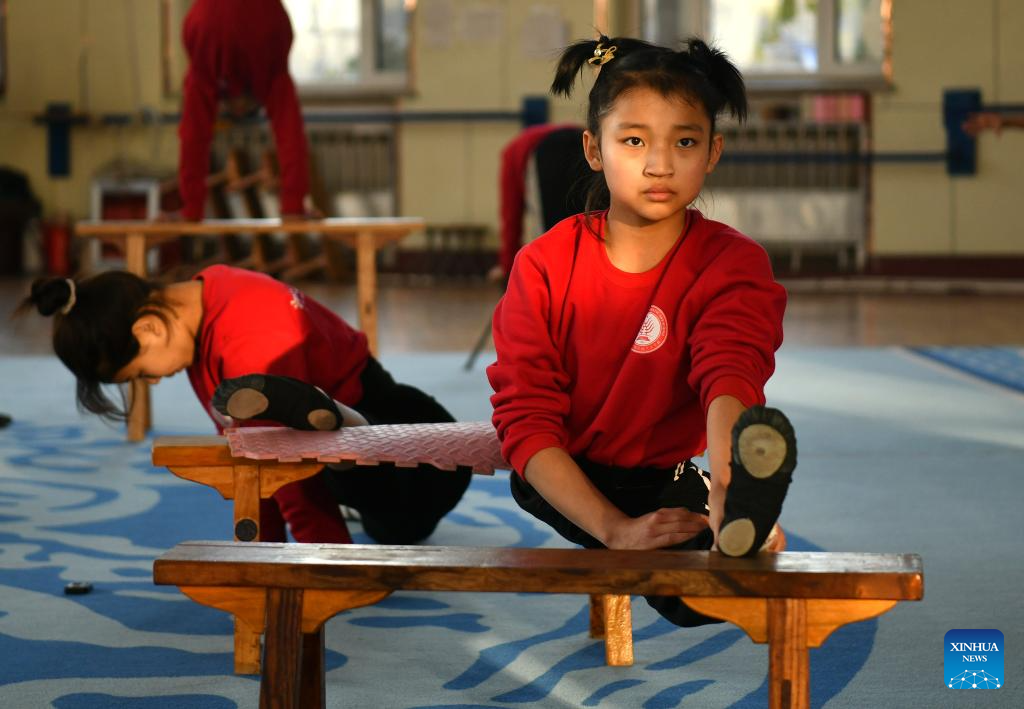
Students practice at the Hebei Wuqiao Acrobatic Art School in Wuqiao County, north China's Hebei Province, Dec. 17, 2024.
The origin of Wuqiao acrobatics can be traced back to the Han Dynasty (202 B.C.-220 A.D.). It was inscribed as one of the first batch of intangible cultural heritages at the state level in 2006. Dubbed the "cradle of Chinese acrobatics," Wuqiao has in recent years scaled up its efforts to sustain and popularize this time-honored treasure. (Xinhua/Mu Yu)
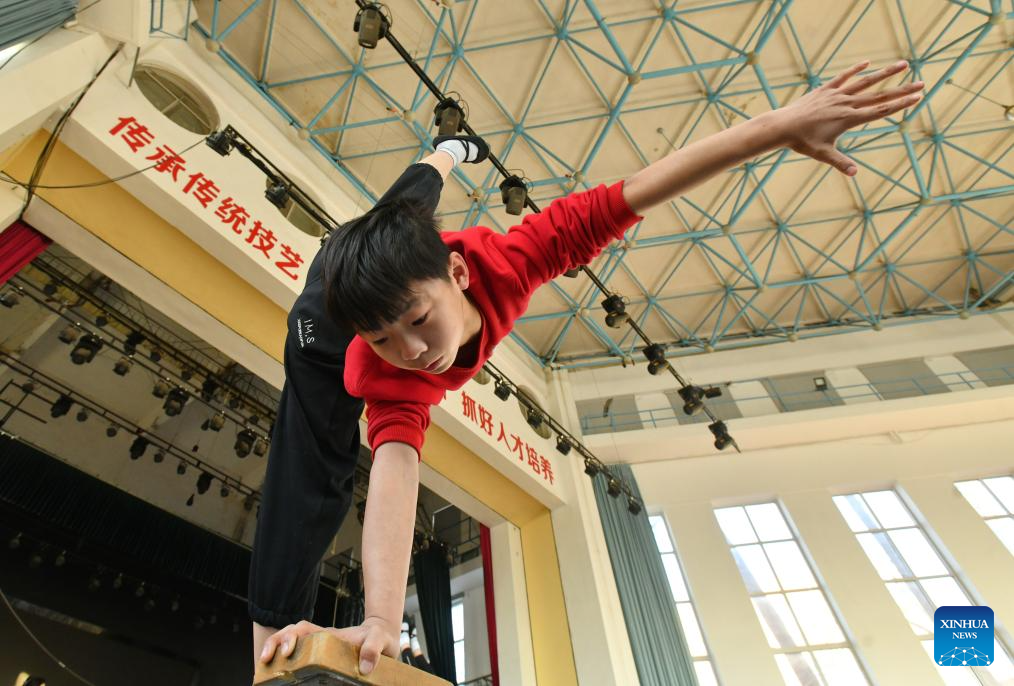
A student practices at the Hebei Wuqiao Acrobatic Art School in Wuqiao County, north China's Hebei Province, Dec. 17, 2024.
The origin of Wuqiao acrobatics can be traced back to the Han Dynasty (202 B.C.-220 A.D.). It was inscribed as one of the first batch of intangible cultural heritages at the state level in 2006. Dubbed the "cradle of Chinese acrobatics," Wuqiao has in recent years scaled up its efforts to sustain and popularize this time-honored treasure. (Xinhua/Mu Yu)
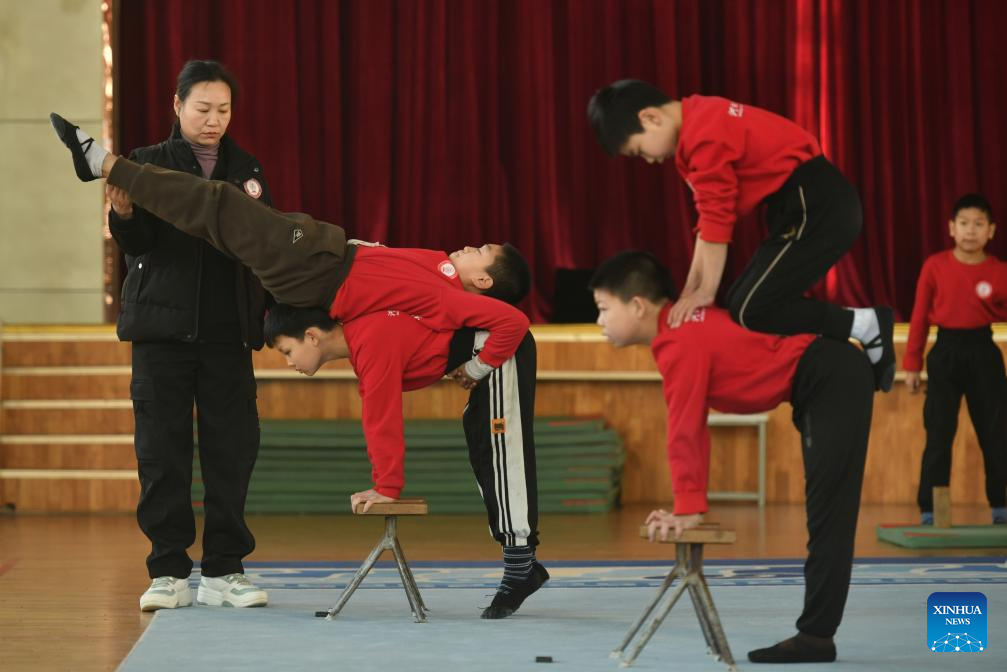
Students practice at the Hebei Wuqiao Acrobatic Art School in Wuqiao County, north China's Hebei Province, Dec. 17, 2024.
The origin of Wuqiao acrobatics can be traced back to the Han Dynasty (202 B.C.-220 A.D.). It was inscribed as one of the first batch of intangible cultural heritages at the state level in 2006. Dubbed the "cradle of Chinese acrobatics," Wuqiao has in recent years scaled up its efforts to sustain and popularize this time-honored treasure. (Xinhua/Mu Yu)

Students practice magic under an instructor's supervision at the Hebei Wuqiao Acrobatic Art School in Wuqiao County, north China's Hebei Province, Dec. 17, 2024.
The origin of Wuqiao acrobatics can be traced back to the Han Dynasty (202 B.C.-220 A.D.). It was inscribed as one of the first batch of intangible cultural heritages at the state level in 2006. Dubbed the "cradle of Chinese acrobatics," Wuqiao has in recent years scaled up its efforts to sustain and popularize this time-honored treasure. (Xinhua/Mu Yu)

Rare glossy ibis returns to north China wetland after 15-year absence
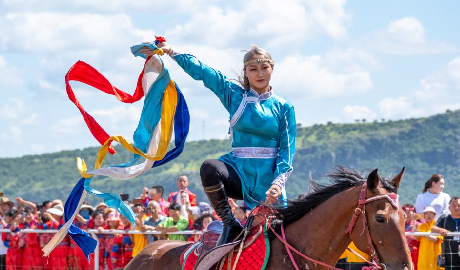
Nadam fair opens with equestrian shows in Inner Mongolia, N China

Laixi city in E China transforms abandoned mine pit into resort to promote ecology
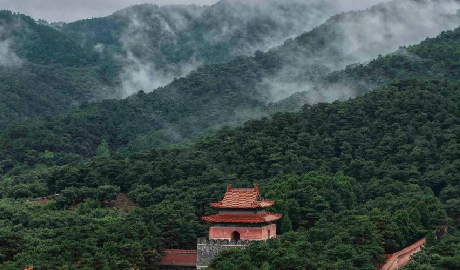
Scenery of mist-shrouded eastern royal tombs of Qing Dynasty in Zunhua City, N China
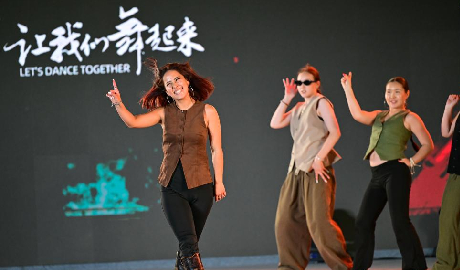
点击右上角![]() 微信好友
微信好友
 朋友圈
朋友圈

请使用浏览器分享功能进行分享
